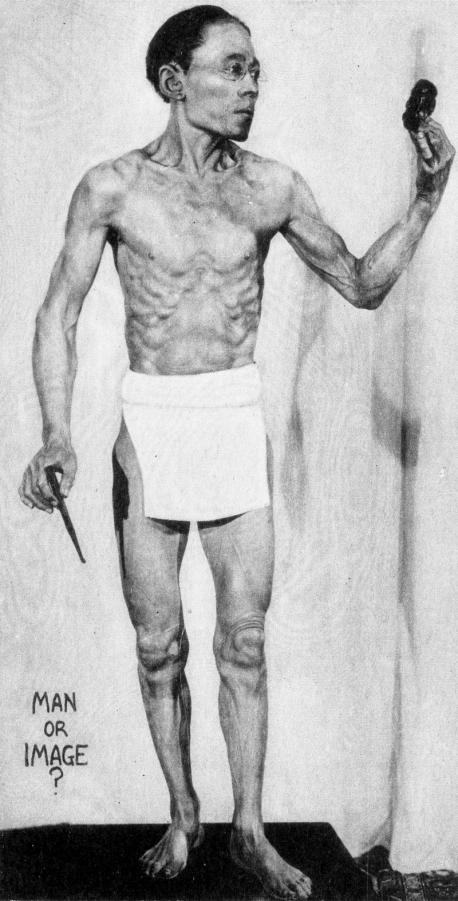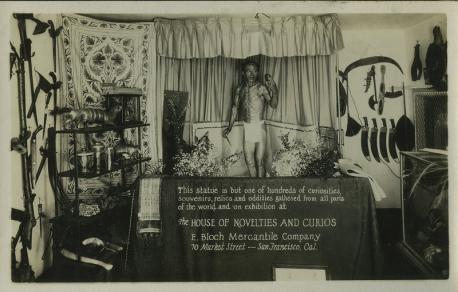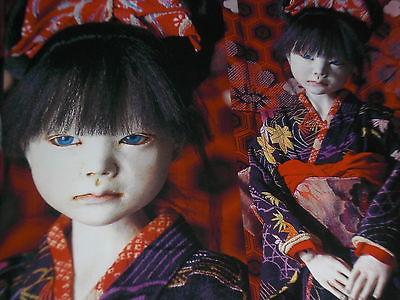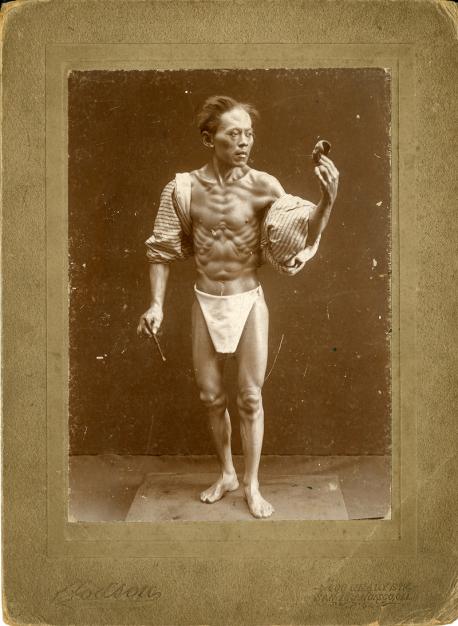Results: Iki-ningyo: the Japanese old living dolls
Published on 09/16/2016
(Source: Juliet Bennett Rylah) In the Ripley's Odditorium in Amsterdam, there is a loin cloth-clad doll that is so incredibly detailed and realistic, they say you might mistake it for a real person. Adored by company founder Robert Ripley since he acquired it in the 1930s, it’s one of the collection’s most popular objects. However, depending on who you ask, this doll has one of two origin stories: the swan song of an artist who, believing he was at death’s door, desired to give one last gift to the woman he loved; or one of only many magnificently detailed dolls constructed by a working class craftsman. Both stories begin in 19th century Yokohama, Japan. Hananuma Masakichi was an artist who specialized in iki-ningyo, or “living dolls.” These dolls came about in the 1700s and achieved great popularity in the mid-1800s. They were put on display and people paid money to see them, akin to the wax museums of today. You will see a picture of this statue here and a few other living dolls to compare different styles.

QUESTIONS
GO to COMMENTS
Comments
1.
1.
The legend says that Masakichi completed this particular doll in 1885, when he was desperately in love, but was dying of tuberculosis. He decided to make a lifelike statue in his own image to gift to his beloved so that she might always remember him. As he wasted away, he labored in his studio, surrounded by mirrors so that he could see every part of his body. He forged the statue out of 2,000 pieces of wood, recreating every curve and crevice. He drilled small holes into the doll's skin to act as follicles, then plucked the corresponding hair out of his own body and inserted the strands into the doll. He did this with the hair on his head, but also his eyebrows, body hair and pubic hair. Some rumors say he gave the doll his fingernails. Others claim it was his teeth, though the doll's mouth is not open wide enough for anyone to confirm. Despite his efforts, the woman he loved left Masakichi, possibly because he spent all his free time making this doll. And as it would turn out, he either didn't have tuberculosis or made a miraculous recovery. He lived for another decade before dying, penniless, at age 63. Did you know this legend before reading this survey?

Yes
7%
130 votes
No
93%
1824 votes
2.
2.
Others believe that this was just another work for Masakichi, and that it might not even be a recreation of the artist, as there is no tradition of self-portraiture in Japan, particularly at this time. It was very likely that the statue was just a hyper realistic doll, and it's not necessarily Masakichi himself. The lean build of the figure, perceived by some as gaunt, would have been typical of a physically active Japanese workman of the time, such as a basket peddler or rickshaw driver. Have you seen such a realistic old piece of art?

Yes
11%
208 votes
No
89%
1746 votes
3.
3.
Depending on how the figure was going to be displayed, sections of it would be carved wood, other sections would be a molded composite of pulverized wood and sawdust mixed with glue. There would be wire armature inside to help position and strengthen. The exterior skin is a material called gofun, a crushed oyster or clam shell mixed with an animal glue, and all traditional Japanese dolls use that as a surface material. It could be, in certain iterations, molded and sculpted like lacquer, but then in its more finely attenuated elements, it serves as a highly polished skin. People think it's porcelain, but it's actually this very highly water soluble material. Have you ever seen an iki-ningyo exhibition?

Yes
6%
125 votes
No
94%
1829 votes
4.
4.
Ripley purchased the doll for $10 in 1934 (that'd be about $180 today). He took the doll to the Chicago World Fair. The doll returned to San Francisco in the late '60s, where it remained in the Fisherman's Wharf Oddtorium through 1988. Then moved to the Ripley's Believe It Or Not museum in Buena Park, California. Then moved to Ripley's in Wisconsin Dell. Masakichi had a stint in San Diego at the Air & Space Museum in 2013, before making his way to his current home in Amsterdam in 2015. Masakichi is not the only doll of its kind that Ripley's owns, although very few currently exist. Ripley also possesses a figure known as Mr. Ito, which they acquired in 1994. Did you like Ripley's show?

Yes
23%
456 votes
No
18%
356 votes
Undecided
15%
299 votes
Not Applicable
43%
843 votes
COMMENTS


